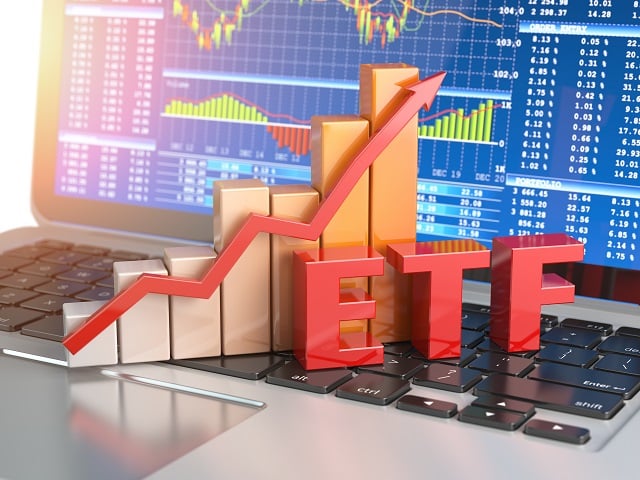Exchange-traded funds are becoming an important part of the investor’s toolkit. Knowing some basics about how ETFs work can help beginners select the best ones for their portfolio.
To make sound investment decisions you therefore need to know all the factors about a particular investment vehicle, and Exchange Traded Funds are no different. Knowing the drawbacks and risks will allow investors to steer clear of potential pitfalls and hopefully head towards tidy profits.
If you want updates on Italian news enter your email in the box below:
By filling out this form I agree to receive information relating to the services on this page in accordance with the privacy policy.
The ten factors to consider before investing in ETFs
Investing in ETFs doesn’t have to be a casual decision. As with other investment opportunities you consider, you need to check whether you are choosing the right ETFs to match your financial goals. Before investing in ETFs, it is essential to know the following factors.
Investment objectives
Setting yourself investment objectives is the first step to take when evaluating an ETF to invest in. Whether it is retirement, a future purchase or other financial milestones, the objectives set will guide the choice of the most suitable ETFs.
There is no guarantee that you will make money from your investments but following a road map you should be able to gain financial security over the years and enjoy the benefits of money management.
Risk tolerance
Secondly, you need to evaluate the degree of risk you are willing to face. The first step to successful investing is understanding your goals and risk tolerance, either on your own or with the help of a financial professional. Although ETFs are generally considered safer, different Exchange Traded Funds may have different levels of risk. More conservative investors may prefer ETFs that track stable indexes like the S&P 500.
Time horizon
It is helpful to determine the length of time you intend to keep your money invested. A long-term approach can withstand short-term market fluctuations, but a shorter time horizon may require more stable ETF options.
ETF charges and fees
One of the biggest advantages of ETFs is that they trade like stocks. An ETF invests in a portfolio of separate companies, generally linked by a common industry or theme. Due to the equity nature of ETFs, investors can buy and sell during market hours, as well as place advance purchase orders, such as limits and stops. In contrast, a typical mutual fund purchase is made after the market closes, once the fund’s net asset value has been calculated.
Every time you buy or sell a stock, you may pay a commission. This also applies when it comes to buying and selling Exchange Traded Funds. Depending on how often you trade an ETF, trading fees can quickly add up and drag down your investment performance.
Fluctuations and underlying risks of ETFs
ETFs, like mutual funds, are often lauded for the diversification they offer investors. However, it is important to note that just because an ETF contains more than one underlying position does not mean it is immune to volatility.
An Exchange Traded Fund that tracks a broad market index such as the S&P 500 is likely to be less volatile than an ETF that tracks a specific industry or sector, such as oilfield services. Therefore, it is crucial to be aware of the fund’s focus and the types of investments it includes.
Low liquidity
Liquidity is an important consideration in investing in exchange-traded funds. ETFs have different liquidity profiles for many reasons. Investing in a ETFs with relatively low liquidity can cost in terms of one spread bid-ask (literally the difference between the bid – money – price and the ask – ask – price charged by a dealer) wider, of fewer opportunities to trade profitably and, in extreme cases, of the inability to withdraw funds in certain situations like a big market crash.
Tracking error of ETFs
Il tracking error of an ETF is the difference between its returns and those of its underlying reference index. The lower the tracking error, the closer the ETF is to the benchmark. Under normal circumstances, such tracking errors are not expected to exceed 2% per year. However, this may vary due to various reasons, particularly when the markets are very volatile.
In-depth research
Before committing to an Exchange Traded Fund, conduct thorough research to understand its investment objective, fees and associated risks. Being well informed will help you make smarter investment decisions.
Start with small investments
For those who are new to investing, it is wise to start with small sums. This approach allows you to gain experience and knowledge without risking significant capital.
Diversify your portfolio and avoid panic selling
Golden rule is to avoid concentrating all investments in a single asset or ETF. Diversifying your portfolio across different Exchange Traded Funds can help spread risk and increase your chances of achieving better returns.
Finally, it is important to remain calm during market fluctuations and avoid panic selling. Markets are naturally subject to fluctuations, and knee-jerk reactions to declines can lead to potential losses. It is advisable to stick to your long-term investment plan and not make impulsive decisions.
